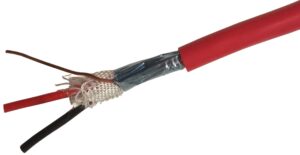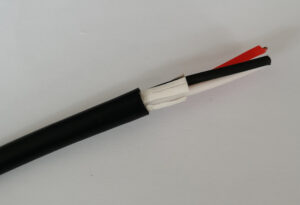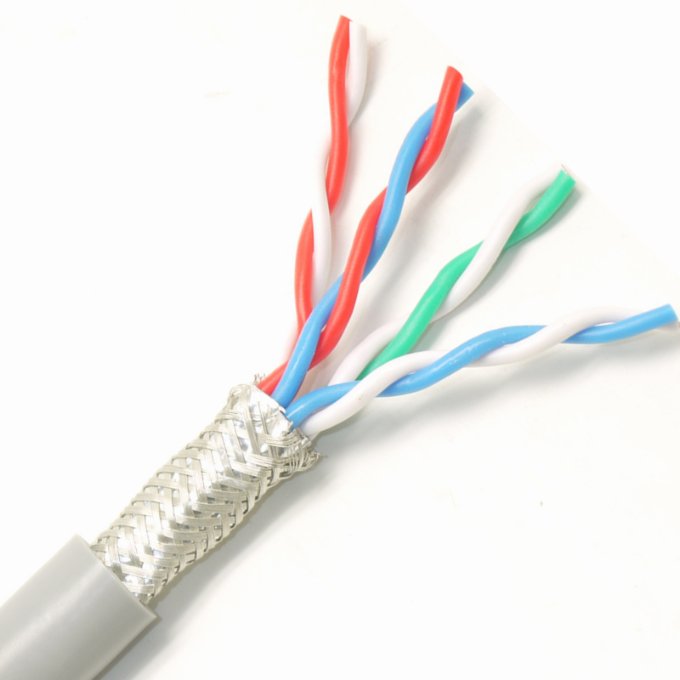I. Introduction
In the realm of modern agriculture, the pivotal role of irrigation in ensuring optimal crop growth and yield is widely acknowledged. At the heart of efficient irrigation systems lies a crucial yet often overlooked component – the सिंचाई केबल. This article delves into the purpose of an watering cable and explores how its integration contributes to the overall efficiency of irrigation systems.

II. Understanding the Fundamentals
A. Definition and Composition
An irrigation cable serves as the neural network of irrigation systems, facilitating the seamless flow of information and energy. Composed of durable materials capable of withstanding the rigors of diverse environmental conditions, these cables are designed to transmit power, data, and signals essential for the proper functioning of irrigation components.
B. The Interconnected Network
The watering cable creates a comprehensive network that interconnects various elements within the irrigation system. From sensors and controllers to pumps and valves, the cable establishes a communication highway, enabling real-time monitoring and control.
III. Facilitating Precise Control
A. Automated Watering Systems
One of the primary purposes of an irrigation cable is to enable the transition from manual to automated watering systems. By integrating with smart controllers and sensors, the cable facilitates precise control over the irrigation process. This automation is particularly advantageous in large-scale agricultural operations, where efficiency and accuracy are paramount.
B. Real-time Monitoring
The watering cable plays a pivotal role in the real-time monitoring of soil moisture levels, weather conditions, and other pertinent data. This constant feedback loop allows the irrigation system to dynamically adjust watering schedules, ensuring that crops receive the optimal amount of water without wastage.
IV. Enhancing Energy Efficiency
A. Power Distribution
Efficient irrigation systems require a reliable and well-distributed power supply. The irrigation cable acts as the conduit for power distribution, delivering energy to various components such as pumps and valves. This streamlined energy flow minimizes losses and enhances the overall energy efficiency of the irrigation system.
B. Integration of Renewable Energy Sources
In the era of sustainable agriculture, watering cables are designed to accommodate the integration of renewable energy sources. Solar panels and wind turbines can be seamlessly connected to the irrigation system through the cable, reducing reliance on traditional power grids and promoting environmentally friendly practices.
V. Weathering Environmental Challenges
A. Durable Construction
The harsh environmental conditions often associated with agricultural landscapes demand durability from irrigation cables. These cables are crafted from materials resistant to moisture, UV radiation, and temperature fluctuations. This robust construction ensures longevity, reducing maintenance requirements and downtime.
B. Subsurface Irrigation Systems
In scenarios where subsurface irrigation is employed, the watering cable’s durability becomes even more critical. Buried beneath the soil, the cable must withstand soil compaction, moisture, and other underground challenges, making it an integral component for the success of subsurface irrigation systems.
VI. Precision Agriculture and Data-driven Insights
A. Harnessing Data for Precision Agriculture
As agriculture embraces the era of precision farming, irrigation cables play a pivotal role in collecting and transmitting data essential for decision-making. This data-driven approach allows farmers to make informed choices regarding water usage, optimizing resources and minimizing environmental impact.
B. Integration with IoT Technologies
The Internet of Things (IoT) has revolutionized agriculture, and watering cables form the backbone of this technological integration. By connecting sensors, actuators, and controllers, the cable transforms traditional irrigation systems into smart, interconnected networks capable of responding dynamically to changing conditions.
VIII. Future Trends and Innovations
A. Wireless Irrigation Communication
The evolution of irrigation cables extends to the exploration of wireless communication technologies. Future iterations may witness the integration of wireless sensors and communication nodes, reducing the reliance on physical cables. This shift not only simplifies installation but also enhances the adaptability of irrigation systems in diverse agricultural landscapes.
B. Artificial Intelligence Integration
As artificial intelligence (AI) continues to advance, watering cables are poised to play a crucial role in integrating AI algorithms into irrigation management. Smart decision-making processes, based on real-time data analysis, can optimize irrigation schedules, anticipate crop water needs, and further refine the efficiency of agricultural water usage.
C. Enhanced Compatibility with Precision Irrigation Equipment
The ongoing development of precision irrigation equipment, such as advanced drip systems and soil moisture sensors, necessitates irrigation cables that can seamlessly integrate with these technologies. Future cables are likely to be designed with enhanced compatibility to support the diverse array of precision irrigation tools available in the market.
IX. Case Studies: Real-world Impact
A. Increased Crop Yields and Water Conservation
Exploring real-world applications, numerous case studies demonstrate the tangible impact of watering cables on agriculture. Farms implementing these systems report significant increases in crop yields and notable water conservation. The precise control enabled by watering cables ensures that water resources are utilized efficiently, leading to improved agricultural productivity.
B. Sustainable Agriculture Practices
Irrigation cables contribute to the adoption of sustainable agriculture practices by minimizing water wastage, reducing energy consumption, and optimizing resource utilization. Farms embracing these technologies often find themselves at the forefront of environmentally conscious and economically viable agricultural practices.

X. Overcoming Challenges and Considerations
A. Cost Considerations and Return on Investment
While the benefits of watering cables are evident, it is crucial to address the associated costs. Farmers must weigh the initial investment against the potential long-term gains, considering factors such as increased crop yields, resource savings, and the overall efficiency of farm operations.
B. Maintenance and Upkeep
Proactive maintenance is essential to ensure the continued effectiveness of irrigation cables. Regular inspections, prompt repairs, and updates to accommodate technological advancements are crucial aspects of maximizing the lifespan and performance of these systems.
XI. Collaborative Efforts for Agricultural Advancement
A. Industry Collaboration
The development and implementation of advanced irrigation systems, including watering cables, require collaboration between technology providers, agricultural experts, and farmers. Industry partnerships can foster research and development initiatives, leading to innovations that address the evolving needs of modern agriculture.
B. Government Support and Incentives
Government support in the form of incentives, subsidies, and educational programs can encourage farmers to adopt advanced irrigation technologies. Policymakers play a vital role in creating an environment that promotes the sustainable and widespread adoption of irrigation cables and associated technologies.
XII. Conclusion
In conclusion, the role of an irrigation cable goes beyond serving as a conduit for power and data; it emerges as a linchpin in advancing agriculture towards precision, efficiency, and sustainability. With continuous technological progress, these cables are set to play a crucial role in shaping the future of farming, aiding growers in navigating the challenges of a changing climate and meeting the increasing global demand for food. Ongoing innovation, collaboration, and dedication to sustainable practices position watering cables to lead the agricultural industry into a new era of productivity and resource stewardship.




